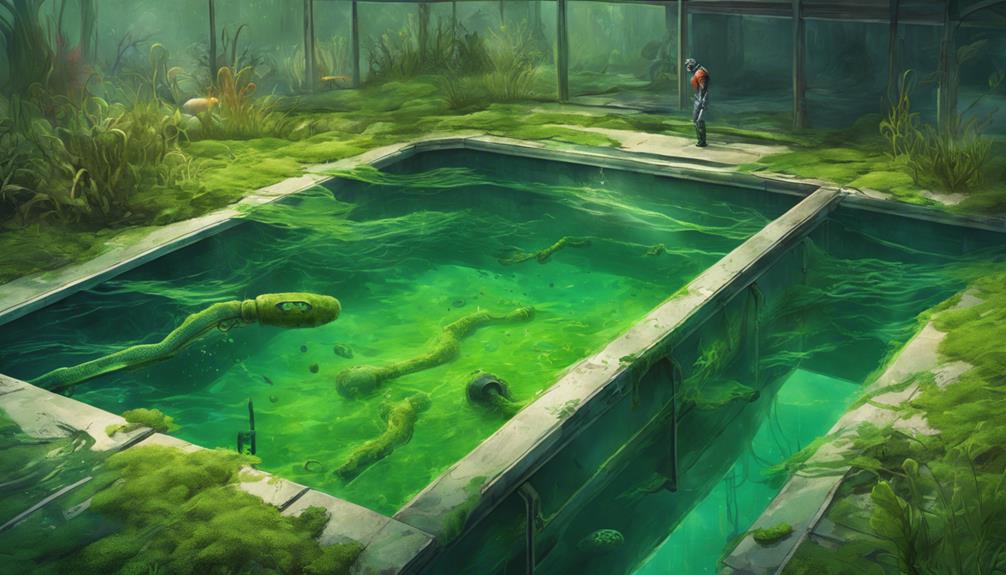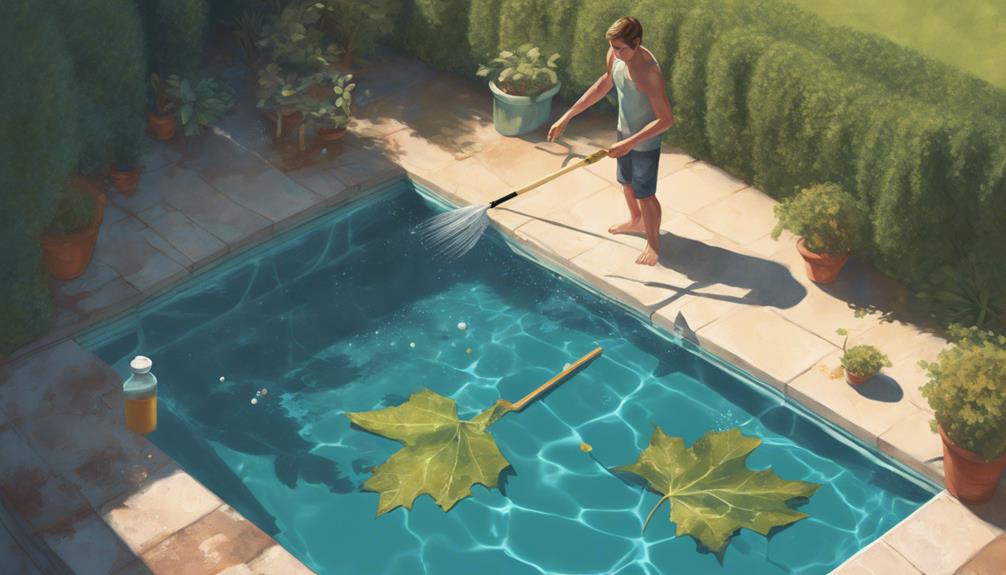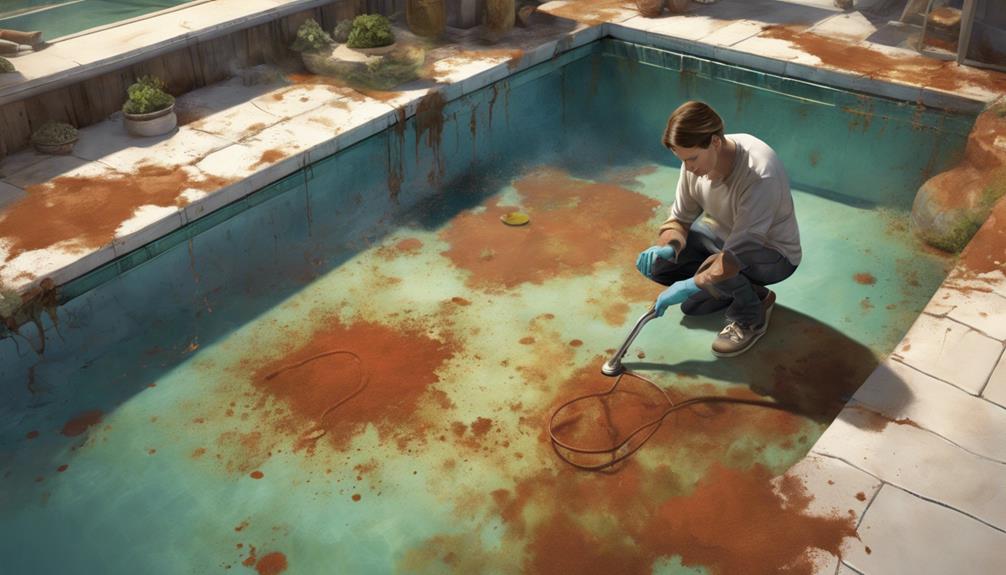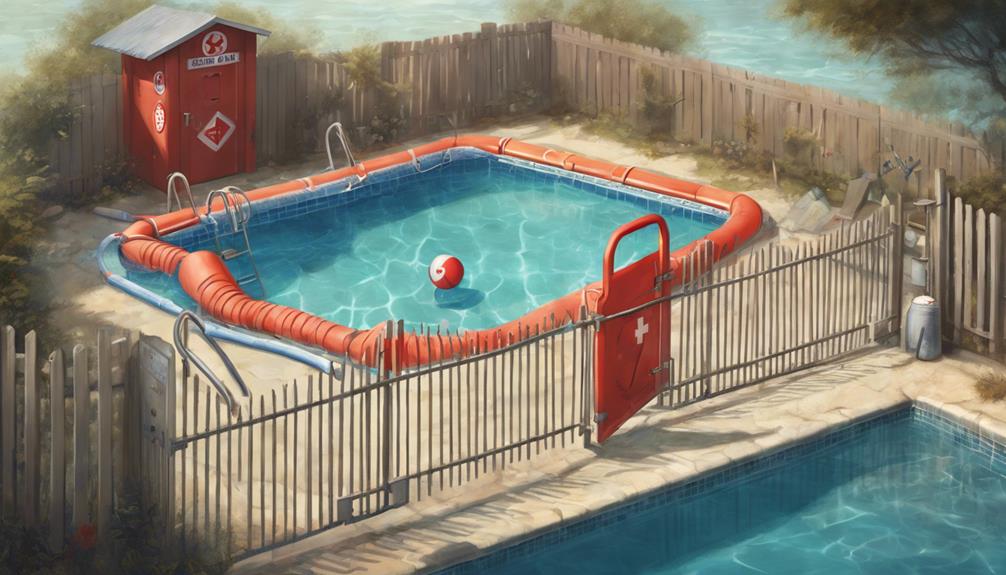To keep your pool’s water clear and free from algae infestations, it is important to recognize the different types of algae and understand their characteristics. Use appropriate cleaning methods for each kind of algae, such as maintaining the correct chemical balance, regularly brushing and vacuuming, and utilizing specialized treatments. For more stubborn algae like black or yellow varieties, consider using specific algaecides and aggressive scrubbing techniques. Monitor your pool’s chemical levels closely and make sure to consistently maintain your pool to prevent outbreaks. When necessary, seek professional pool maintenance services to ensure a healthy swimming environment. By mastering these techniques, you can protect your pool’s pristine water.
Key Takeaways
- Identify algae types to target specific treatment.
- Use specialized algaecides for resistant algae.
- Regularly monitor and adjust pool chemicals.
- Implement aggressive cleaning techniques for stubborn algae.
- Promptly address white water mold with heavy chemical treatment.
Algae Types and Characteristics
The diverse types of algae commonly found in pools exhibit distinct characteristics that can impact water quality and maintenance routines. Green algae, a prevalent pool algae, gives water a green tint with a slimy texture, thriving in poorly sanitized pools. Balancing pool chemicals and regular brushing effectively combat this type.
Yellow algae, also known as mustard algae, has a sandy texture and is resistant to chlorine, requiring vacuuming and 'floc' treatment for removal.
Black algae is aggressive, with a heavy slime layer rooted in pool surfaces, especially plaster finishes, necessitating scrubbing and shocking treatments for elimination.
White water mold, common in pools and hot tubs, requires heavy chemical treatment and manual cleaning due to its importance.
Understanding these algae types is essential for maintaining a healthy and clean pool environment.
Effective Cleaning Techniques
Understanding the specific cleaning techniques tailored to each type of algae and mold is crucial in maintaining a clear and healthy pool environment.
Green algae, common in pools, can be easily cleaned by balancing pool chemicals and regular brushing.
Yellow algae, also known as mustard algae, requires vacuuming and 'floc' treatment due to its resistance to chlorine.
Black algae, aggressive and uncommon, demands scrubbing and shocking the pool to eradicate its rooted presence.
White water mold, a common pool mold, needs heavy chemical treatment and manual cleaning to prevent harm to filtration systems.
To guarantee pool cleanliness, regular vacuuming, chemical balance checks, and proper cleaning methods are essential in preventing algae and mold growth.
Professional pool maintenance services can provide valuable advice on consistent maintenance practices.
Dealing With Resistant Algae
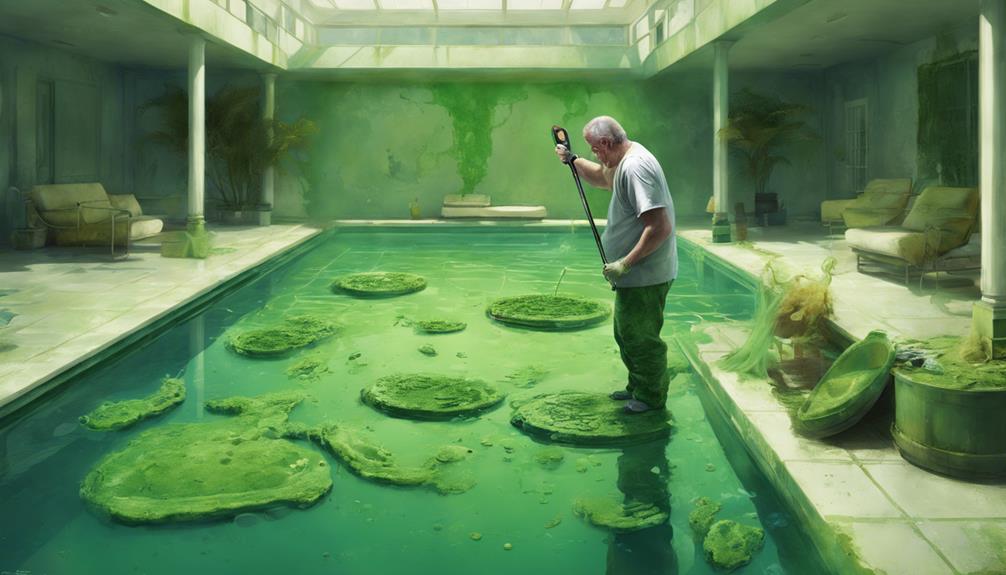
When faced with resistant algae in your pool, it is important to implement targeted cleaning strategies to effectively eradicate the persistent growth. Resistant algae, such as yellow or black algae, can be tough to eliminate due to their chlorine-resistant nature and tendency to root deeply in pool surfaces.
To combat this, consider using specialized algaecides designed for the specific type of algae present. Additionally, vigorous scrubbing of affected areas and shock treatments may be necessary to break down the algae's defenses.
Regularly monitor and adjust your pool's chemical levels to prevent further algae growth. By taking a proactive and aggressive approach to cleaning, you can reclaim your pool's clear waters from even the most stubborn algae infestations.
Managing White Water Mold
To effectively address the presence of white water mold in your pool or hot tub, it is essential to understand the specific characteristics of this common mold and the necessary steps for its management.
White water mold is a prevalent issue that arises due to inadequate cleaning and filtration practices. This mold is resistant and tends to cling stubbornly to pool surfaces and objects. Although non-toxic, white water mold can harm filtration systems if left unchecked.
Managing white water mold requires a combination of heavy chemical treatment to eliminate the mold spores and manual cleaning to remove any existing mold buildup.
It is vital to address this issue promptly to maintain a healthy and clear pool or hot tub environment.
Essential Pool Maintenance Tips
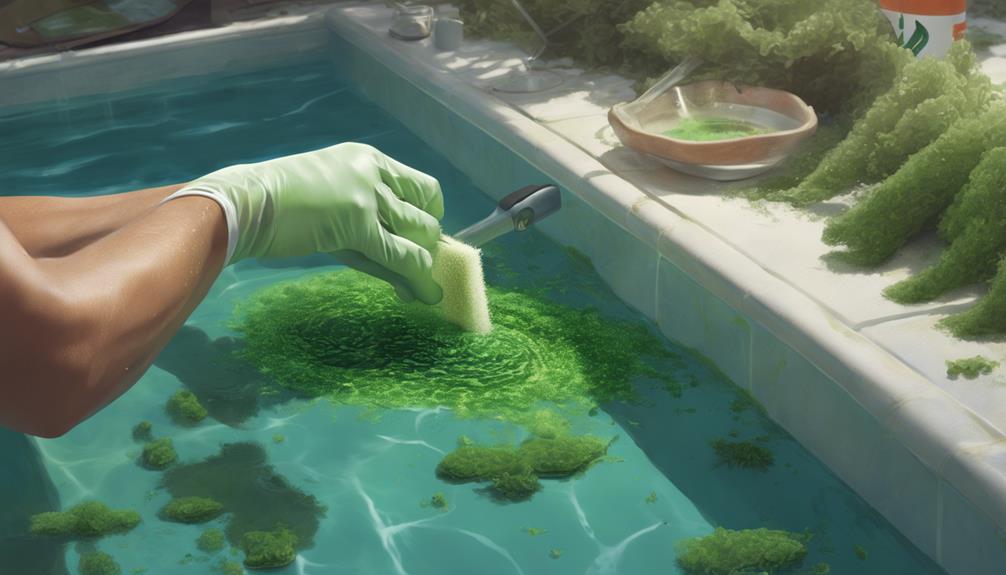
Maintaining a consistent schedule of regular pool maintenance is vital for ensuring the cleanliness and health of your pool environment. To keep your pool in top condition, regular vacuuming to remove debris and checking chemical balance are essential steps.
This routine upkeep helps prevent the growth of algae and mold, which can quickly turn your pool into an unsanitary environment. Additionally, ensuring proper cleaning of pool surfaces and thorough filtration system maintenance are key aspects of effective pool care.
If you're unsure about the best practices for pool maintenance, consider seeking advice from professional pool maintenance services. By staying proactive and consistent with your pool maintenance routine, you can enjoy a clear and inviting pool all season long.
Frequently Asked Questions
Can Algae Grow in Saltwater Pools?
Yes, algae can grow in saltwater pools. While saltwater systems may inhibit algae growth due to the chlorine produced by salt generators, algae can still develop if the pool's chemical balance is not properly maintained. Regular testing and maintenance are essential.
How Can I Prevent Algae Growth Between Professional Cleanings?
To prevent algae growth between professional cleanings, maintain a diligent pool care routine. Regularly test and balance chemicals, scrub pool surfaces, and guarantee proper filtration and cleaning. Consistent maintenance is key to preserving your pool's clarity and health.
Is It Safe to Swim in a Pool With Algae?
Swimming in a pool with algae is not safe due to potential health risks. Algae can cause skin irritation, infections, and respiratory issues. Promptly address algae growth with proper cleaning and chemical treatment before resuming swimming activities for safety.
Can Pets Be Affected by Algae in the Pool?
Pets can be affected by algae in the pool. Different types of algae like green, yellow, black, and white water mold can pose risks to pets' health. Regular pool maintenance, proper cleaning, and chemical balance are vital to guarantee a safe swimming environment for pets.
What Are the Signs of a Pool Being Over-Sanitized?
In monitoring pool sanitation, signs of over-sanitization may include skin irritation, eye redness, and strong chemical odors. Excessive chlorine levels can cause equipment corrosion and fading of pool surfaces. Regular testing and adjustment are essential for maintaining a healthy swimming environment.
What are the best ways to defend your pool’s clear waters from algae?
To fight pool algae expert tips, regular maintenance is key. Keep chlorine levels balanced, scrub pool walls and floors, and use algaecide as a preventative measure. Proper filtration and circulation also help. Additionally, keep debris and organic matter out of the pool to prevent algae growth.
Conclusion
In the battle against algae invasions in pools, diligent maintenance practices are key to ensuring clear and inviting waters.
Just as a gardener tends to their garden to prevent weeds from taking over, pool owners must regularly monitor and clean their pools to combat algae growth.
By staying proactive and following effective cleaning techniques, pool owners can successfully defend their pool's clarity and create a welcoming oasis for all to enjoy.

